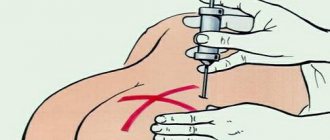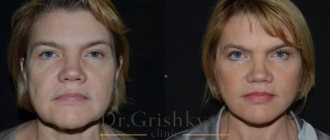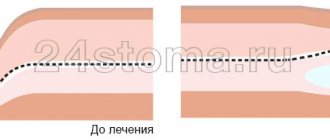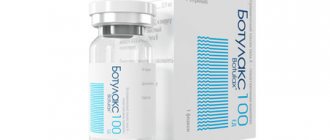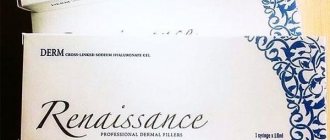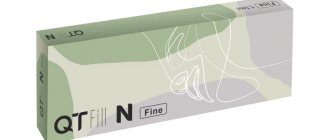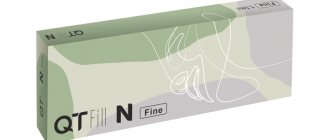Forehead wrinkles are a common cosmetic problem. And not only age. Quite often they appear in young people - this is due to too active facial expressions, the habit of frowning or raising eyebrows.
Modern cosmetological methods help to cope with this problem: forehead lift, injections of drugs based on hyaluronic acid. In our BL clinic you can undergo correction of forehead wrinkles at any convenient time.
Forehead rejuvenation
If you are thinking about how to remove wrinkles on the forehead and are looking for the best method, you will find our short review useful. Our cosmetologists use the following methods and approaches:
Contour plastic surgery (injection of fillers)
Forehead contouring with fillers involves the introduction of special preparations based on hyaluronic acid into problem areas. These drugs (we use, for example, Juvederm, Surgiderm, Revofil, Profhilo) make it possible to replenish the missing volume. In addition, hyaluronic acid promotes deep skin hydration and stimulates the production of its own collagen and elastin. As a result, the skin becomes denser, firmer and more elastic, wrinkles disappear.
Contraindications: skin diseases, severe endocrine disorders, bleeding disorders.
Botox
The injection of botulinum toxin is a popular technique. This substance has the unique ability to deeply relax the muscles to which the skin is attached. Thus, after injections, wrinkles formed due to moving facial expressions smooth out on their own (after all, mobility is temporarily limited). This method is especially good if you have a habit of raising your eyebrows or frowning. The effect of Botox injections lasts for about six months (sometimes longer), and during this time you can get rid of the bad habit.
Contraindications: allergic reactions, severe endocrine diseases, rash and inflammation in the area of drug administration, pregnancy, lactation.
Liquid mesothreads
Liquid threads are a biogel based on hyaluronic acid and zinc chloride, and also contain a phosphate buffer. The components of the drug act at the cellular level, restore the water balance of the skin, and stimulate the renewal process. Mesothreads trigger the process of collagenogenesis, and a dense natural frame is formed in the injection area, which holds the tissues and prevents them from deforming. Mesothreads differ from traditional threads in that when introduced, mechanical tension does not occur. The tightening effect is based on deep hydration, restoration of normal tissue structure, and restoration of volume in areas where it is needed. The effect is approximately the same as when injecting fillers for wrinkles on the forehead .
Contraindications: severe endocrine diseases, chronic skin diseases, rash and inflammation at the injection site.
Injection techniques for administering neuromodulators in the upper third of the face
Wrinkles on the forehead
The frontalis muscle raises the eyebrow (for example, in moments of surprise or fear) and is the only levator muscle in the upper third of the face. Contraction of the frontal nerve muscle leads to the development of horizontal wrinkles on the forehead.
Injections of onabotulinumtoxinA to correct them are performed in five areas (see Fig. 4, left). Injections at two optional points are optional. The dosage directly depends on the purpose of correction, the degree of muscle activity and previous procedures in this area. OnabotulinumtoxinA injections are made into the frontalis muscle.
Gently pinch the skin over the muscle until you see the papule, and then insert the needle one-third of its length at an upward angle (see Figure 4, right). Compare eyebrow height, muscle strength and skin elasticity before injection; It is also important to determine whether there is asymmetry in this area.
Justifiable prescribing of contouring procedures to patients (in cases where the indications for correction are deeper dynamic wrinkles and static wrinkles at rest) or botulinum therapy is necessary to achieve optimal results and prevent potential complications.
Overcorrection in the forehead area should be avoided, especially in the case of patients with flat and low eyebrows. In addition, overadministration of onabotulinumtoxinA may result in the patient developing a frozen forehead, brow asymmetry, or medial and/or lateral brow ptosis. It is also wise to “pull” the injection points as far laterally as possible to avoid the “Mephistopheles eyebrows” effect. To avoid brow ptosis, it is also important to inject glabellar complex depressors and lateral periorbital rhytides.
Figure 4. Correction of horizontal wrinkles using onabotulinumtoxintypeA. Injections are made at five main points with the possibility of additional correction at two additional points (indicated by blue circles) (left). For each injection, gently pinch the skin until a papule appears, and then insert the needle at an upward angle one-third of its length (right)
Folds and wrinkles in the glabella area
Glabella wrinkles or glabellar lines can develop due to the natural aging process (including photoaging) of the skin in combination with the constant contraction of the procerus muscles (“procerus muscles”) and corrugator.
Contraction of the procerus lowers the medial aspect of the eyebrow and is the main cause of horizontal wrinkles, while contraction of the corrugator reduces the medial aspect of the eyebrow and is primarily responsible for vertical lines.
Previously considered an independent indication, correction of glabella wrinkles is now considered an integral part of harmonizing the shape and position of the eyebrows.
Treatment with onabotulinumtoxinA is indicated for temporary improvement in the appearance of wrinkles in the glabella area, both during active facial expression and at rest. Correction of glabella wrinkles with onabotulinumtoxinA includes five injection points: they are made into the procerus muscle (one point) and the medial and lateral corrugator muscles (two points on each side) (see Fig. 5, left).
For injections into the procerus, pinch the skin to set the direction and insert the needle half its length in an upward direction (see Fig. 5, top, right). Injection into the medial corrugator muscle is made (on both sides) with a skin clamp, a needle inserted to its full length, at an upward angle (see Fig. 5, bottom, right).
An injection into the lateral corrugator muscle, due to its more superficial location compared to the medial one, is performed by clamping the skin and inserting the needle a third of its length, at an upward angle.
Correction of glabella wrinkles with onabotulinumtoxintypeA can provoke ptosis of the eyelids and eyebrows if the angle or depth of the injection is chosen incorrectly.
Figure 5. Correction of glabella wrinkles with onabotulinumtoxintypeA. Injections are carried out at five points (left). Note that the different symbols used here indicate different injection depths: squares indicate injections with the needle inserted the full length; X – with a needle inserted half its length; asterisks - with a needle inserted a third of the length. To inject into the procerus muscle, pinch the skin and insert the needle half its length at an upward angle (top, right). To inject into the medial corrugator muscles, pinch the skin and insert the needle to its full length at an upward angle (bottom, right). To inject into the lateral corrugator muscles, pinch the skin and insert the needle one-third of the way at an upward angle.
"Crow's Feet"
Regular contraction of the numerous facial muscles responsible for smiling and squinting, especially the orbicularisoculi muscles, leads to the formation of lateral canthal wrinkles, also called crow's feet.
These lines originate from the outer corner of the eye and initially appear when smiling, but can become permanent due to aging, photodamage, and skin correction. The orbital part of the orbicularis oculi muscle provokes protrusion of the eyebrows and voluntary closure of the eyelids; she is also “responsible” for those same “crow’s feet”.
In addition to its indications for the temporary correction of glabella wrinkles, onabotulinumtoxinA has recently been approved for the temporary correction of lateral canthal wrinkles associated with orbicularisoculi activity.
Successful treatment of crow's feet can be achieved in most cases using injections at three points on each side. You can take one of two injection models as a basis: sample 1 is more suitable for patients with low eyebrows (see Fig. 6, top, left), while sample 2 is more relevant for patients with high eyebrows (see Fig. 6, top, right ).
Insert the needle one-third of its length and inject botulinum toxin type A into the superficial fibers of the orbicularisoculi muscle (see Fig. 6, bottom) or even more superficially, into the subcutaneous space. Ask the patient to keep their eyes closed. Protect the upper eyelid with your finger and avoid injecting into this area.
Helpful tips for mastering optimal technique: Aim the needle transversely away from the eye whenever possible, and avoid superficial blood vessels in this area, as the procedure can cause bruising due to the highly vascularized area.
Depending on the patient's ethnicity and the depth of the wrinkles, the total dose of onabotulinumtoxinA may vary. It should be noted that treatment is not able to eliminate crow's feet completely in the case of most patients.
Dynamic wrinkles associated with muscle contraction respond well to neuromodulators, but static wrinkles caused by photoaging, loss of subcutaneous fat and structural support become more noticeable with age and are less responsive to treatment.
Figure 6. Correction of crow's feet with onabotulinumtoxinA. Injections are made at three points on each side, according to scheme 1 for patients with low eyebrows (top, left) or scheme 2 for patients with high eyebrows (top, right).
For each injection, insert the needle a third of its length into the points indicated by the asterisks, as shown in the figure (below, left). Protect the upper eyelid with your finger and insert the needle towards the eye (bottom, right) Eyebrow lifting
Since the orbital part of the orbicularis oculi muscle, protruding forward, lowers the eyebrows and provokes voluntary closure of the eyelid, the presence of “crow's feet” leads to drooping of the lateral aspect of the eyebrow.
OnabotulinumtoxinA can be used to lift the eyebrows, as well as treat glabella wrinkles and crow's feet themselves. Injections of onabotulinumtoxinA are made at five points in the glabella area, as described above. Treatment of the lateral aspect of the orbicularisoculi is carried out at three to four points on each side of the face (see Fig. 7, left).
Although techniques for achieving maximum results in a brow lift may vary, it is essential to block the brow depressors (corrugator, procerus and orbicularis oculi). The two superior lateral sites (one on each side) in the frontalis muscle can be injected to prevent the occurrence of Mephistopheles' eyebrows.
Depending on the patient's ethnicity and the severity of eyebrow drooping, the total dose of onabotulinumtoxinA may vary. Injection techniques for the glabella and crow's feet areas are described in the previous sections (see Fig. 7, right).
Figure 7. Eyebrow lifting with onabotulinumtoxinA. Injections are made at five points in the glabella area and eight points in the crow's feet areas (four on each side of the face) (left).
Note that the different symbols used here indicate different injection depths as follows: squares indicate the need to inject with the needle inserted to its full length; X – with a needle inserted half the length; asterisks - with a needle inserted a third of the length. The injection technique in the glabella area is shown in Figure 5; the injection technique at two optional points in the forehead area is shown in Figure 4; The orbicularisoculi injection technique is shown in Figure 6. Use a finger to protect the eye from the drug entering it (see right) Expansion of the ocular aperture
The eyelid part of the eye muscle closes the eyelid during blinking and is divided into preseptal and pretarsal parts. Preseptal fibers lie in front of the orbital septum; During the aging process, they form wrinkles on the lower eyelid and narrow the palpebral fissure itself.
Dilation of the ocular aperture with onabotulinumtoxinA is performed at one point on each side, under the lower eyelid and lateral to the central pupillary line (see Fig. 8, left). In addition, by promoting the widening of the palpebral fissure, injections of the drug into the pretarsal region of the lower eyelid can also reduce horizontal rhytides (expression wrinkles).
Perform a quick test (lower eyelid tone test) before injection to ensure that the eyelid is functioning properly. Do not treat this area with onabotulinumtoxinA in patients with round eye syndrome, bags under the eyes, or those who have failed the lower eyelid tone test.
When injecting, insert only the tip of the needle under the skin for a very superficial injection. Hold the needle parallel to the skin and observe the formation of a papule (see Fig. 8, right). Instruct the patient to keep their eyes closed during injection and use their fingers to protect the eyes.
Figure 8. Dilatation of the ocular aperture with onabotulinumtoxinA. A very superficial injection is made at one point on each side, under the lower eyelid (left). Insert the needle to the cutting depth and keep it lateral to the central pupillary line. Keep the needle parallel to the skin; start administering the drug after the formation of a papule. Use your fingers to protect the patient's eyes (right)
After the procedure
Immediately after the injections, slight swelling may appear, and sometimes there are also small bruises at the puncture sites. There is nothing you need to do about this; it usually goes away on its own within a few days. In the first week, it is not recommended to sunbathe or visit the bathhouse or sauna. It is also better to refrain from physical activity and drink alcohol.
To make an appointment for a forehead lift in Moscow, fill out the form on the website or call us by phone. The cosmetologists of the BL clinic will select the optimal solution for your case.
Indications for the procedure
Forehead contouring is indicated for:
- the presence of deep eyebrow wrinkles;
- pronounced horizontal wrinkles on the forehead;
- folds, creases above the eyebrows;
- the presence of atrophic scars and scars on the forehead;
- congenital or acquired defects of the forehead line (tissue deficiency, asymmetry).
This procedure will be effective even in cases where the administration of botulinum toxin does not give the desired smoothing effect.
For which areas are Amalain fillers used?
In clinical cosmetology, Amalain fillers are used to correct areas such as:
- Forehead. Injections are given as anti-aging therapy against deep wrinkles and creases;
- Lips. With the help of fillers, you can create any volume of lips, change their contour, and rejuvenate them;
- Cheekbones. In the cheekbone area, the use of fillers makes facial features more harmonious and expressive. The condition of the skin also improves, it is rejuvenated and tightened;
- Chin. Fillers are used to correct the shape of the chin (reducing or enlarging), filling in dimples;
- Nasolabial folds and nose. Thanks to filler, you can fill in nasolabial folds, smooth them out, and make your face visually younger. Also, with the help of fillers, you can avoid rhinoplasty by correcting your nose;
- Between the eyebrows. Fillers eliminate vertical creases and age wrinkles;
- The area around the eyes. Injections help get rid of wrinkles, bags, puffiness under the eyes, reduce ptosis, and make the look more open.
The components of hylauronic acid are safe and harmless to the body. They stimulate the production of collagen and elastin, retain moisture in the epidermis, rejuvenate the skin, and improve its condition.
Preparation for the procedure, rehabilitation, contraindications
The injections are carried out on an outpatient basis, the patient can immediately return to their normal lifestyle. For the first couple of weeks, it is recommended to avoid excessive physical activity and not visit baths and saunas. Rehabilitation is quick and gentle - it takes several days, there may be minor bruises and swelling, which are normal during this procedure and go away on their own without a trace. Contraindications for forehead contouring include general medical conditions for which any interventions are undesirable (oncology, pregnancy and lactation, infectious diseases). Also, the procedure is not recommended for people under the age of 18.
After plastic surgery with fillers, it is important to follow your doctor’s instructions.
The most important thing to remember is that after visiting a specialist, be sure to strictly follow all the recommendations given by the doctor! Otherwise, the result is not guaranteed. Neglecting the requirements for the recovery period can lead to uneven distribution of the drug or failure to obtain the much desired volumes and forms. An important rule is that you must categorically abstain from drinking alcoholic beverages and foods for the day after surgery. For four days after the procedure, a ban on facial massage and the use of blood thinning drugs (like aspirin) is imposed. And for a month - no sauna or solarium. Approach the doctor's requirements consciously, and the result will not be long in coming.
Amalain filler line
In their work, our clinic’s specialists use products from the original line of fillers, which includes:
- Amalain Soft. This is a special injection gel with a low specific density. It is used to eliminate minor skin imperfections and facial wrinkles. The filler helps replenish moisture deficiency and restore hydration of the epidermis.
- Amalain Medium. The filler has medium density. When used, it quickly eliminates wrinkles, creases, and evens out imperfections in the forehead, cheeks, and nasolabial triangle. The drug is also used by cosmetologists to correct lip volume.
- Amalain Hard The drug has a fairly high density compared to other fillers described above. It is used by cosmetologists for serious problems, such as severe creases, deep senile wrinkles, and sagging skin.
The type of filler and the treatment area are selected by the cosmetologist after consultation and examination of the patient.
Contraindications to the use of fillers
Filler injections, like any cosmetic procedure, have both indications and contraindications. In particular, they do not apply in the following cases:
- Diabetes;
- The presence of malignant neoplasms;
- Certain types of dermatological pathologies;
- Pregnancy and breastfeeding;
- Blood clotting disorder;
- Recent laser skin resurfacing;
- Infections in the acute stage;
- Herpes.
Before contacting a cosmetologist, you must consult about the presence of indications and contraindications for the procedure.
Features of forehead contouring at DECA clinic
- Individualized approach: the cosmetologist takes into account the patient’s wishes, carefully analyzes the skin condition and offers methods that will be most effective for this particular patient.
- Guaranteed safety: the clinic uses only certified drugs from the best manufacturers, eliminating errors when determining the required volume of the drug or during its administration
- Quite affordable cost: today every girl and woman can really try forehead contouring, lip augmentation, correction of nasolabial folds, etc.
Please note that in the clinic injection methods are widely used not only for facial rejuvenation and modeling of its features. Contouring of the neck, décolleté, arms, elimination of stretch marks, cellulite, etc. are popular. In fact, any problem with the skin on the face and body can be solved by resorting to one or another injection method.
All you have to do is call us and come for a consultation with a cosmetologist. And remember: to stay young and beautiful in the conditions of modern aesthetic cosmetology, no sacrifices are needed! We have proven: beauty does not require sacrifice, beauty requires the work of a competent specialist. Waiting for you!
Benefits of the procedure
Hyaluronic acid in fillers for forehead contouring is a natural component that maintains optimal water balance in cells and takes an active part in regeneration processes. With age, the content of hyaluronic acid decreases noticeably, which leads to dehydration, the formation of wrinkles, folds, and a decrease in the volume of tissue on the face. Injections of appropriate drugs smooth out age-related changes without harm to health. Within 12 months (the exact period depends on the type of drug), hyaluronic acid is completely eliminated from the body. A long recovery period after the procedure is not required.
No procedures on the eve of important events
Modern injections are as safe as possible and do not leave long-lasting marks. Nevertheless, when attending the procedure for the first time in your life, it is better not to plan it later than three to four days before the important event. After the injection, slight swelling may occur. This is a completely normal reaction, but, of course, it does not add aesthetics. The appearance of small hematomas is also possible - approximately every third patient faces this problem. There are a lot of blood vessels in the skin, and even the most experienced doctor cannot get around them all. Small bruises go away quickly, especially if you use healing ointments recommended by your doctor.
Drugs used
JUVEDERM is a line of products with hyaluronic acid, which are produced using 3D Matrix technology. Includes, among other things, preparations with lidocaine for maximum patient comfort.
TEOSYAL is a highly purified product with minimal protein content. Suitable also for sensitive skin.
RESTYLANE is a filler containing 2% hyaluronic acid. Allergic reactions are extremely rare.
BELOTERO – fillers of varying densities and a high degree of safety from the MERZ company.
RADIESSE is a preparation based on calcium hydroxyapatite, indicated as a filler for patients intolerant to hyaluronic fillers, as well as as a reinforcing filler using the meso-radiesse technique.
What side effects might there be?
Any cosmetic procedure can have side effects. This is usually due to the individual characteristics of the human body. In the case of fillers, these could be:
- Hematomas;
- Redness of the skin;
- Swelling of the skin.
These phenomena are temporary and they go away quickly with proper care. Such severe consequences as contouring of the drug, tissue necrosis, the appearance of lumps and compactions under the skin, granulomas can indicate the unprofessionalism of the cosmetologist who worked with the patient.
If you want to prolong your youth and beauty with the help of fillers, then contact our Elena Ilchuk Aesthetic Medicine Center. We employ experienced, qualified cosmetologists. We use only original certified drugs.
Fillers are a regular procedure
As mentioned earlier, fillers tend to dissolve. On average, this occurs a year and a half after the injections, but the duration of action may vary depending on individual indicators. After this, a second visit to a specialist is required. The only exception is the lipofilling procedure. With a properly administered injection, your own lipid cells will take much longer to dissolve, about three to five years. Sometimes even longer - this again depends on individual indicators.
